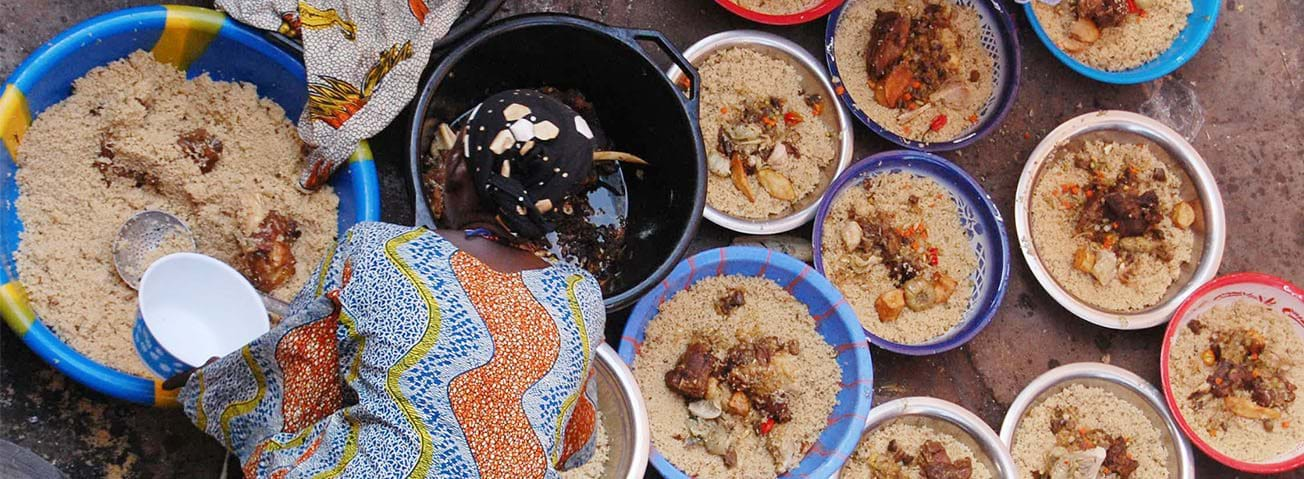Mali’s Rural-Urban Gap in Food Security Vanished Amid the Coronavirus Pandemic

The 2020 International Food Security Assessment (IFSA) published by the USDA’s Economic Research Service (ERS) highlights an increase in food insecurity around the world associated with the Coronavirus (COVID-19) pandemic. Recent updates to the IFSA report suggest the number of food-insecure people increased by 160 million in 2020, corresponding with a 21 percent increase in the share of the global population who are food insecure amid the COVID-19 pandemic. These projections align well with comparable estimates reported by the United Nations’ Food and Agriculture Organization and the International Food Policy Research Institute, two leading authorities on international food security. However, these projections estimate only global, regional, or country averages and therefore do not illuminate local-level changes in food security.
The Sub-Saharan African country of Mali is one of the 76 countries included in the IFSA. Mali is home to roughly 20 million people, and about 42 percent live below the poverty line, according to the World Bank. Many households in Mali, particularly in rural areas, experience food insecurity. Indeed, before the pandemic, measured levels of food insecurity were higher in Mali’s rural areas compared with urban areas. This case study from Mali can aid researchers in conducting a more nuanced investigation of how local-level characteristics may influence changes in food security associated with the COVID-19 pandemic in low-income countries.
In an article recently published in the journal Food Policy, economists from ERS and the World Bank estimated changes in food insecurity between Mali’s urban and rural areas associated with the COVID-19 pandemic. They combined nationally representative pre-pandemic household survey data with follow-up phone survey data collected by the World Bank’s Living Standards Measurements Study Team. The authors found that at least in the relative short-term, pandemic-related disruptions were more dramatic in Mali’s urban areas compared with Mali’s rural areas. This variation in pandemic-related disruptions disproportionally influenced changes in food insecurity over time between urban and rural areas associated with the coronavirus pandemic.
The incidence of food insecurity can be measured at three different levels of severity based on the United Nations’ Food Insecurity Experience Scale, with moderate food insecurity most accurately capturing the multi-dimensional reality of food insecurity (see above chart). Levels of food insecurity measured before the coronavirus pandemic indicate that food insecurity was more prevalent in Mali’s rural areas (at 24 percent) than in Mali’s urban areas (at 16 percent). Three months after the first recorded cases of COVID-19 in Mali, the rural–urban gap of moderate food insecurity vanished. Nineteen percent of households in Mali’s rural areas as well as its urban areas experienced moderate food insecurity. This is consistent with the authors’ observations—based on recorded COVID-19 case counts, Google’s Community Mobility Reports, and responses from follow-up phone survey data—that initial pandemic-related disruptions were more dramatic in Mali’s urban areas than in rural areas.
The convergence in the rural–urban gap of those who experienced food insecurity within Mali demonstrates how local-level analysis can complement global projections by estimating more specific and nuanced changes in food security associated with the pandemic. Global projections and local-level analysis can inform policymakers as they design and target post-pandemic humanitarian assistance.
The Coronavirus Pandemic and Food Security: Evidence from Mali, by G. S. Adjognon, J.R. Bloem, and A. Sanoh, Food Policy, 2021, doi: https://doi.org/10.1016/j.foodpol.2021.102050
International Food Security Assessment, 2020–30, by Felix G. Baquedano, Cheryl Christensen, Kayode Ajewole, and Jayson Beckman, ERS, August 2020
Agricultural Baseline Database, by Baseline Team, USDA, Economic Research Service, March 2024
COVID-19 Working Paper: International Food Security Assessment, 2020-2030: COVID-19 Update and Impacts of Food Insecurity, by Felix G Baquedano, Yacob Abrehe Zereyesus, Cheryl Christensen, and Constanza Valdes, ERS, January 2021


